Discover the Beauty and Diversity of Persian Carpets
Persian carpets have been famous for their detailed patterns, rich colors, and superior craftsmanship for centuries. They have graced the floors of palaces, homes, and museums worldwide and have become symbols of Iran’s rich cultural heritage.
History of Persian Carpets
The art of rug-making has a long and storied history in Iran, dating back to ancient times. Nomadic tribes originally made Persian Carpets as a practical way to keep warm and provide insulation in their tents. Over time, the art of rug-making became more refined and sophisticated, with intricate patterns and designs woven into the fabric. During the reign of the Persian Empire, rugs were often commissioned by the wealthy and used to decorate palaces and other grand buildings. Today, Persian rugs are still handcrafted using traditional techniques and are considered some of the finest in the world.
The Pazyryk carpet which is considered to be the oldest carpet in the world that is discovered so far, reflects old Persian design. And it is believed by the archaeologists to have been created by the Achaemenid civilization. But it is still uncertain if the carpet was made in the area that it was found or it is manufactured by the Achaemenids.
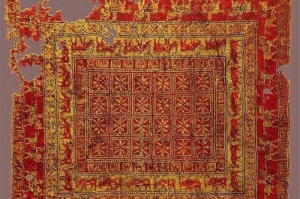
Persian Carpets in Different Regions of Iran
Iran is a large country with rich cultural history, which is reflected in the wide variety of Persian Carpets produced in different regions and among ethnic groups of Iran. Some of the most well-known Persian rugs are Kilim, Jajim, and Gabbeh. Kilim rugs are known for flatweave construction and geometric patterns, while Jajim rugs using a tapestry-like technique and feature more organic, abstract designs. Gabbeh rugs are characterized by their thick, plush piles and simple, rustic patterns.
The colors and designs and materials used in Persian rugs can vary widely depending on the region in which they are made. For example in the north of Iran, rugs tend to be made using wool and feature bold, geometric patterns in bright colors. In the south of Iran on the other hand, rugs are often made using natural dyes and feature more subtle, muted colors and more organic, flowing patterns.
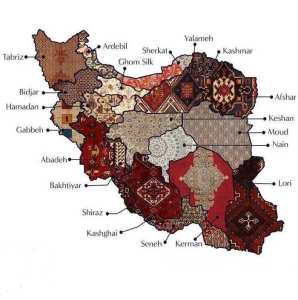
Persian carpet in different parts of Iran
Azerbaijan and Tabriz Carpets
Azerbaijan carpets are true masterpieces, crafted with love and care by the talented people of Azerbaijan. Their appreciation for beauty is evident in every stitch, and it’s why Azerbaijan is a leading destination for carpet weaving in Iran. Tabriz, a city within Azerbaijan, holds a special place in the hearts of carpet aficionados, being recognized as the “World City of Carpet Weaving” by the World Handicrafts Council. Tabriz carpets are the epitome of luxury, with their rich textures and intricate designs that often bring traditional stories to life. The designs are a blend of geometric patterns, florals, and more, creating a tapestry of beauty that will take your breath away. And, let’s not forget about the iconic Harris carpets, known for their intricate designs and bold red hue – a true standout in any home.
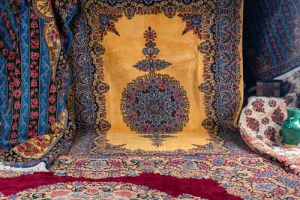
Tabriz Carpet
Isfahan Carpet
Isfahan, the capital of Iran during the Safavid dynasty, was renowned for its beautiful carpets. Safavid kings were avid patrons of carpet weaving, and the workshops connected to the royal palace produced some of the most elegant and beautiful rugs of that era. These Isfahan carpets are known for their unique and intricate designs, created by artists like Kamaluddin Behzad.
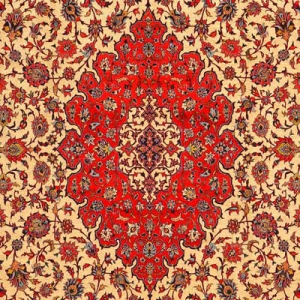
Isfahan Carpet
Currently, same as many Isfahan handicrafts, Isfahan carpets are among the few Iranian urban carpets that have preserved traditional Iranian designs and are considered the most traditional carpets. The city’s tile works and historical buildings influence the designs of Isfahan carpets. They typically feature Shah Abbasi, Lakh and Taranj, animal tree, Slimi Lach and Taranj, Shah Abbasi Afshan and geometric Lach and Taranj, and face and landscape designs. They are typically woven using 14 or more colors, often featuring lacquer, blue and ivory colors on an ivory background.
Fars Carpet
Iranian handwoven carpets are renowned for their beauty and quality worldwide, particularly those from the Fars province in southwest Iran. These carpets have a long history, dating back at least 12 centuries, with many ancient Persian carpets no more than 300 years old. Most old carpets from Fars are made of wool, with cotton threads and wefts being more common in specific areas such as Darab, Euclid mountains, and Abadeh Faragheh. The carpets are crafted by women artisans, each clan and tribe having a unique weaving method.
The patterns and designs typically seen in Persian carpets include geometric and animal motifs and plant and flower designs. The colors used in Fars carpets are lacquer, pink, magenta, purple, buttermilk, gold, blue, navy, green, yellow, brown, and white. One of the most famous weaves from the region is the Gebe weave, which are basic rugs in natural sheep colors such as white, black, brown, beige, and gray in small sizes with simple designs.
Qashqai Carpet
Qashqai carpets are a true representation of nomadic culture and artistry within the Qashqa’i people. It is capturing the essence of their rich heritage in every knot. These handwoven beauties are known for their intricate patterns and charming similarities, making them highly sought-after and beloved by carpet enthusiasts everywhere. The Ayl Qashqai variety is particularly special, with its unique blend of yarn and wool creating a texture that’s unlike any other. But what truly sets Qashqai carpets apart is the use of grooved cuts and a blend of cotton and wool threads, giving each one a character and charm that’s all its own. In a world where machine-made carpets are the norm, traditional Qashqai carpets stand out as a testament to the skill and creativity of nomadic weavers.
The heart and soul of Qashqai carpet weaving lies in the use of a deep, rich red, taken from the Sorkfam flower. This color pops against the intricate designs found in bergamots, making a bold statement in these hand-woven works of art. While it’s not as common to use the hue throughout the entire rug or carpet, when it’s incorporated into the border, it creates a captivating contrast that’s sure to turn heads. Whether you’re a seasoned collector or simply love beautiful things, the use of this intense red is just one of the many reasons why Qashqai carpets are so cherished.
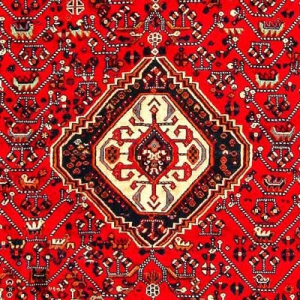
Qashqai Carpet
Kashan Carpet
Kashan is a city steeped in rich art and cultural heritage that goes back thousands of years. Kashan has a lot of attractions and with its many industries and artistic pursuits , it’s particularly famous for its exquisite carpet weaving. The beauty of Kashan carpets is widely recognized, and they are seen as carrying on the legacy of Iran’s weaving traditions, including Glabton textiles and various types of velvets that have earned Iran global recognition. During the Safavid era, Kashan was the hub of courtly carpet weaving and produced the highly prized silver weaved and Zarbaf silk carpets known as Shah Abbas carpets. The oldest carpets in Kashan can be traced back to the 11th century and boast intricate and hunting designs that are sure to impress.
Kashan carpets are famous for their intricate designs and unique beauty. They can be divided into two categories based on their design and weaving techniques: Kashan, Natanz and Joshghan products. One of the key features of Kashan carpets is their rich navy blue borders against a lacquered background, which is sometimes beige. These carpets typically feature fewer than ten colors in their designs. Some of the most popular designs in Kashan carpets include Shah Abbasi Lakh and Taranj, Shah Abbasi Afshan with a cream background, the all-round vase, the Kandili Taranj, the Mehrabi tree, the Joshghani geometric, and the Jahreh Bafi and Zareh Bafi.
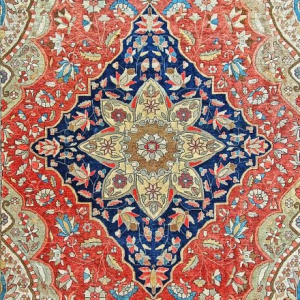
Kashan Carpet
Kerman Carpet
Carpet weaving is an ancient and original art of Iranians and is a significant handicraft in Kerman. It has a long history in the city, dating back before the Safavid era and reaching its peak during this period. A carpet from Kerman kept in the museum of Hazrat Imam Reza in Mashhad is estimated to be about five hundred years old. The raw materials used for Kerman carpets include wool for pile and cotton thread for weft, with local wool being durable and silky. Still, imported wool from Khorasan or Kermanshah or the drier wools of Tabriz is also used.
Kerman is famous for its carpet weaving workshops that weave intricate designs like Sabzikar, Pictorial, and Afshan. The Raver area is especially well-known for its stunning Sabzikar designs, including favorites like Hafez, Lili and Majnoon, Khayam, and Manzare. Kerman carpets are known for their diversity and vivacity, often featuring 15 to 30 different colors in a single design. Popular themes include grape clusters, vegetable gardens, flower pots, trees, and Quranic frames. Standard colors used in Kerman carpets include light and dark lacquer, beige, maroon, copper, navy blue, pink, and light green, making them a delightful addition to any home.
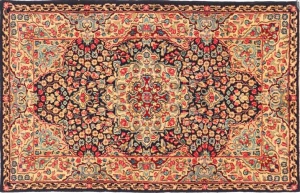
Kerman Carpet
Turkmen Carpet
The Turkmen people have a rich history of carpet weaving that stretches back centuries, although it’s difficult to pinpoint exactly when it began. One of the oldest examples of Turkmen carpet weaving is the Pazyrik carpet, which dates back to 500 BC and was made from yarn and camel wool. This stunning carpet features a variety of colors and boasts a knot density of 3,200 knots per square meter. In traditional Turkmen culture, women wove carpets on horizontal poles and within tents, resulting in smaller pieces that are now highly sought after. Turkmen artisans are also skilled in weaving other types of carpets and rugs, such as Khorjin, Almalik, and Ajaq Bashi, showcasing their versatile talent.
Turkmen carpets are a true work of art, with their abstract “goul” or flower patterns capturing the emotions and feelings of the weaver. Popular designs include the Turkmen spoon, Turkmen Akhal, Turkmen gazelle, and the four seasons, all created by repeating a series of intricate motifs. When it comes to color, Turkmen carpets are a feast for the eyes, using rich and vibrant hues such as lacquered red, navy blue, deep green, crisp white, and warm beige. These colors give the carpets their unique character and make them a true masterpiece.
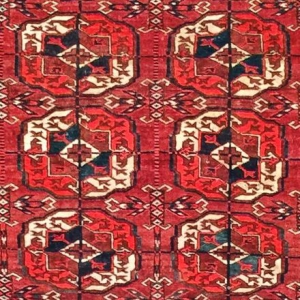
Turkmen Carpet
What Carpet is Good for Me as a Traveler to Iran and Where Should I Buy It
If you are planning a trip to Iran and are interested in purchasing a Persian carpet, there are a few things to consider:
- Think about the style of rug that best fits your needs. Do you prefer a more formal, urban style, or rural rug?
- Consider the size and color of the rug, as well as the materials it is made from.
- Consider where you will be buying the rug.
Many reputable dealers and shops in Iran sell high-quality Persian rugs, so be sure to do your research and choose a trusted seller.
To choose the type of carpet, we must pay attention to the environment where we want to use the carpet. The term “Pakhor” means the level of resistance of the carpets to the movement of people.
Carpets with a delicate texture are more suitable for spaces such as the bedroom where fewer people come and go. On the other hand, thick and durable models can be used for areas such as the living room, where people walk more often.
When selecting a carpet, consider its washability as a crucial factor, particularly for households with young children, pets.
Border Crossing Rules About Carpets for Tourists in Iran
If you are planning to bring a Persian carpet back with you after your trip to Iran, there are a few border crossing rules to be aware of. First, obtain all necessary export permits for the rug before leaving the country. These permits can be obtained from the Cultural Heritage Organization of Iran. Additionally, you will need to declare the carpet at customs when crossing the border. Ensure all necessary documentation is on hand to avoid any delays or issues.
Passengers who leave Iran’s air borders can take 24 square meters of handwoven carpets out of the country per passport with no limit on the number carpets. You must present a passport and a plane ticket to take the carpet with you.
Also, the ceiling for exporting handwoven Kilims from Iran equals 40 square meters.
Experience the Art of Persian Carpet Weaving as a Tourist in Iran
As a tourist in Iran, you can experience the traditional art of carpet weaving firsthand. Some workshops and studios in Iran offer visitors the chance to try their hand at this ancient craft, and it can be a fun and rewarding way to immerse yourself in local culture.
If you are interested in trying carpet weaving, you can search for studios or workshops in the city or region you visit. Some places like Narcis Complex offer carpet tours for both demonstration and Persian carpet workshops that allow you to learn the basics of carpet weaving, while others may offer more in-depth experiences where you can work with a master weaver to create your rug. Depending on the location and type of experience you choose, you may be able to work with traditional materials and techniques or try your hand at more modern approaches to rug-making.
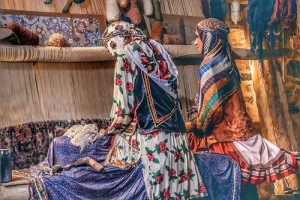
Persian Carpet Video: How a Persian Carpet is Made
Conclusion
Persian carpets are a stunning and unique aspect of Iranian culture, steeped in history and featuring a vast array of styles and techniques. From the sophisticated city rugs in the north to the charming, rural styles of the south, there’s a Persian carpet for every taste and home décor. As a visitor in Iran, you can witness the timeless art of carpet weaving and even craft your own rug with the help of local experts. Whether you’re a collector, a design enthusiast, or just looking for a special, authentic keepsake from your trip to Iran, a Persian rug is a cherished and timeless piece to add to your home.
Rural (nomadic) carpets are unique in that they are mostly created through “mental weaving”, where the weaver’s taste and emotions are reflected in the design and texture of the carpet. These carpets, mostly woven by women, reflect the culture and tradition of the rural and nomadic communities. Nomadic carpets, in particular, depict the harmony with nature and the lifestyle of the people through their designs and colors, using locally available materials and tools. These carpets are not influenced by market trends and remain true to their natural origins.
Travelers departing Iran by air can bring as many handwoven carpets as they like, as long as each carpet is no larger than 24 square meters. Just be sure to bring your passport and plane ticket with you. There is a limit of 40 square meters for exporting handwoven Kilims from Iran. To make your trip as smooth as possible, it’s a good idea to make sure you have all the required paperwork before leaving.
When choosing a Persian carpet, keep in mind factors like style and design, size, material, and cost. Think about how it’ll complement your home decor and if it will be the right fit for the room you want to use it in.
Yes, many workshops and studios in Iran offer tourists the chance to learn about and experience carpet weaving firsthand. You can search for studios or workshops in the city or region you are visiting or ask for recommendations from your hotel or a local tour guide.
Persian rug are delicate and should be treated with care. To maintain the quality of your rug:
1. Vacuum it regularly and have it professionally cleaned every few years.
2. Avoid placing your rug in direct sunlight or damp or humid areas, as these can fade the colors or cause the rug to become moldy.
3. If you spill something on your rug, try to blot the stain as soon as possible to prevent it from setting in.

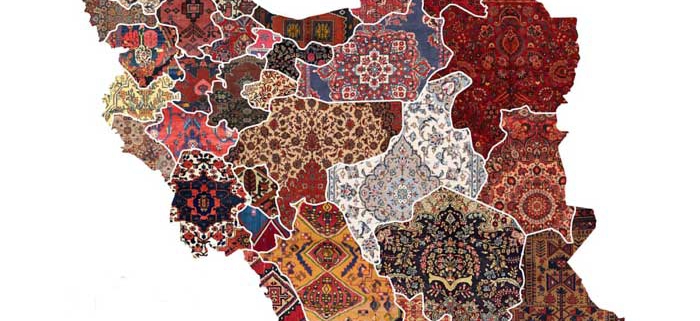
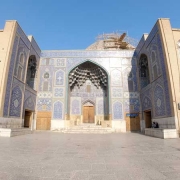
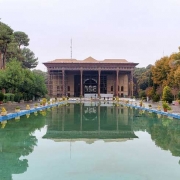
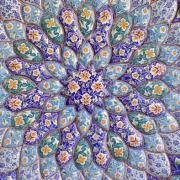
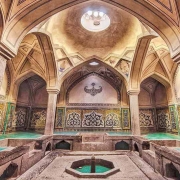
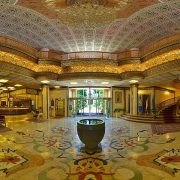
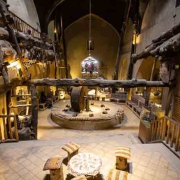
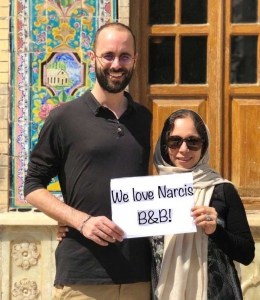




Leave a Reply
Want to join the discussion?Feel free to contribute!